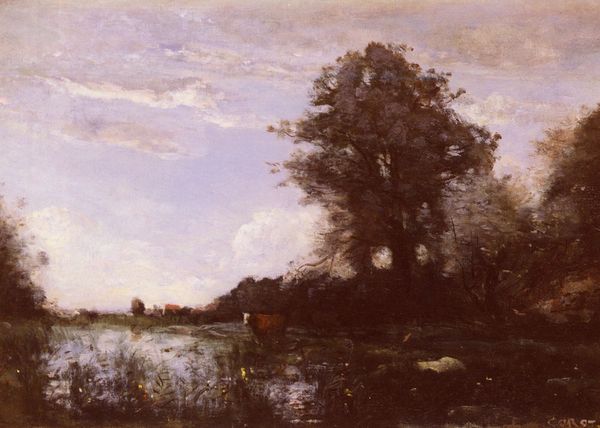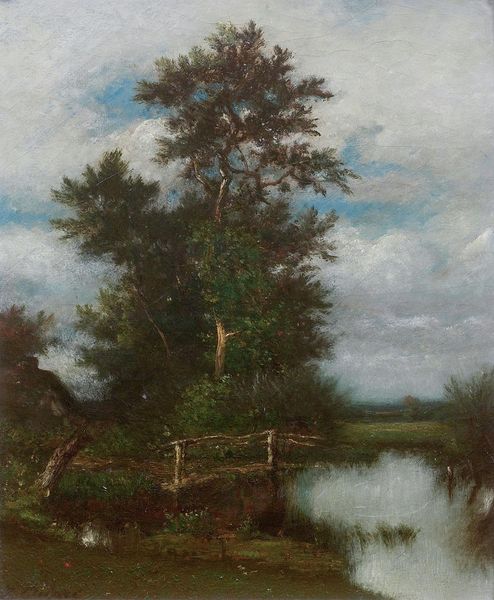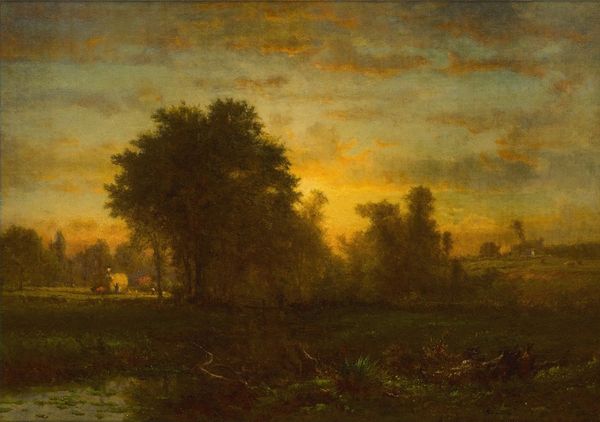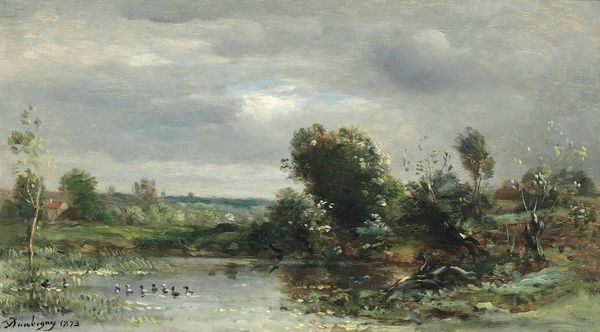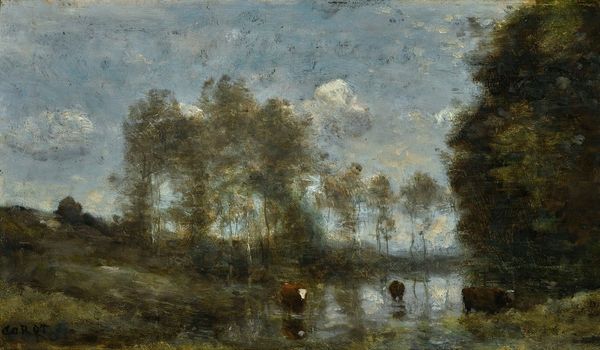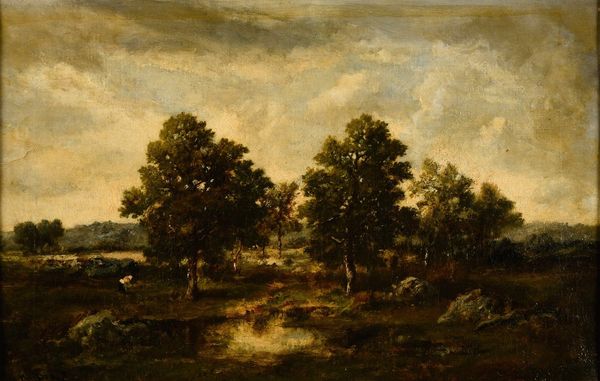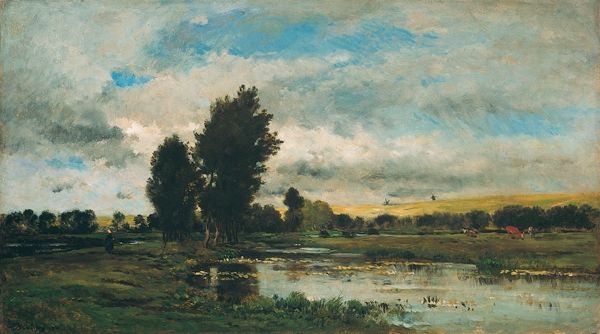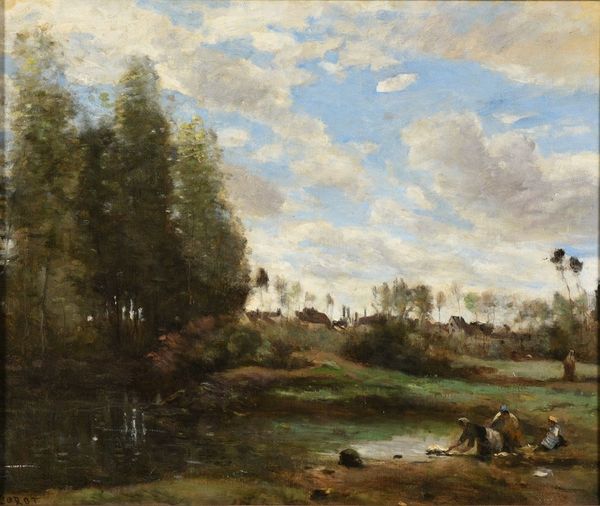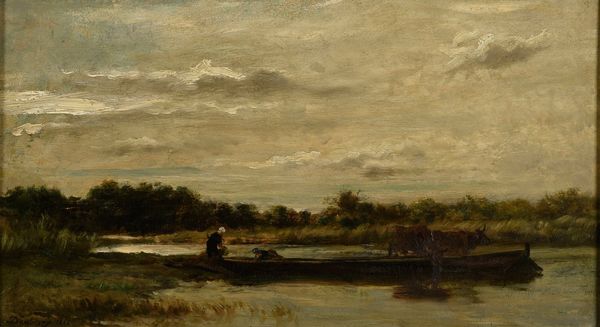
Copyright: Public Domain: Artvee
Curator: "Souvenir Des Dunes De Dunkerque," created by Camille Corot between 1872 and 1873. It's an oil painting that captures a scene near Dunkirk. Editor: Immediately, I’m struck by the division of the canvas. A dark, almost impenetrable mass of foliage on the left, giving way to a luminous, airy expanse on the right. There’s a real dichotomy here, isn't there? Curator: Absolutely. And the juxtaposition speaks volumes. Dunkirk, as a place, carries so much historical weight – from its role in wartime to its significance in maritime history. This painting feels like a meditation on memory, the ‘souvenir’ in the title suggesting something cherished yet perhaps tinged with the weight of the past. Editor: I see what you mean. The darkness could symbolize the repressed, the untold stories of the dunes, with the light representing the present and the possibility of renewal. But, formally speaking, the lack of crisp detail in the darker area, contrasting with the feathery brushstrokes defining the sky and distant buildings, creates a powerful sense of depth and receding space. It is more about the formal balance that evokes the romantic symbolism. Curator: True. Corot often blurred the lines between Romanticism and the burgeoning Impressionist movement. There's a romantic yearning for nature here, a feeling of solitude suggested by the figures subtly placed within the scene. They could suggest an element of loss of self. It is interesting because you can never tell their exact facial traits. Editor: That subtle detail enhances the painting’s meditative quality. We aren't meant to connect as closely as with other figures. It keeps it loose, and flowing and makes it less formal as art. This interplay of light and dark, combined with those ambiguous figures, seems key to its success as art. I now start to feel like they're like placeholders of time rather than individual entities that occupy the space. Curator: Corot, influenced both by classical landscapes and a desire to capture the fleeting effects of light, uses this canvas as a sort of emotional container of what once was or used to be. Editor: It becomes a very sophisticated artistic investigation, almost ahead of its time when you phrase it that way. I came to appreciate it more, seeing these romantic forms as memory fragments suspended in visual harmony.
Comments
No comments
Be the first to comment and join the conversation on the ultimate creative platform.
